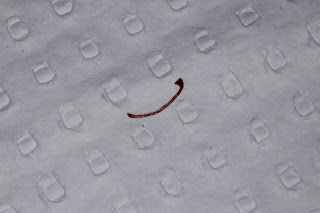Count your cords
A couple of days ago I left retraction cord in the gingiva of a patient for the first time. Of course it just happened to be my mother. Thankfully, when I put in cord retraction cord, I am very careful to count exactly how many go in and count how many come out. Unfortunately on that day, as hard as I searched, I just couldn't find the cord. It was a small, size 0 cord and was placed quite far under the gingival margin. A mistake I made was not cutting the cord long enough so ended up putting two different pieces to surround a single tooth. The problem was once I removed one piece, I forgot where the second piece started and finished. Rather than continue to dig around the gum, I finished whatever it is that I was doing, brought her back 2 days later and tried again. The gum was not visibly inflamed but the area of the gum that exhibited bleeding on probing was clearly the place where the cord was present. I probed around the gum and found the end of the cord and removed it.
Lessons learned:
-Count how many cords go in and how many come out. Don't let your dental assistants suction the cords up. Ensure the cords are still intact and you have not cut it during restoration finishing
-Cut a long enough piece to cover as much of the tooth you want to. Use a sharp pair of scissors to cut the excess and tuck the cord back into the gums. If there is one piece of cord going all the way around the tooth, then you don't need to work out where it starts and finishes. Avoid using multiple cords to surround a tooth. If the cord is too short, take it out and start again with a proper length.
-Ideally, the cord is removed at the same appointment of placement. Waiting like I did does work as the gingival crevicular fluid will loosen the cord and the gingival inflammation will loosen the gum. However, there is a large risk of recession due to the inflammatory process involved.

Comments
Post a Comment
Please leave a comment and let me know what you think or if there are any topics you would like covered in the future